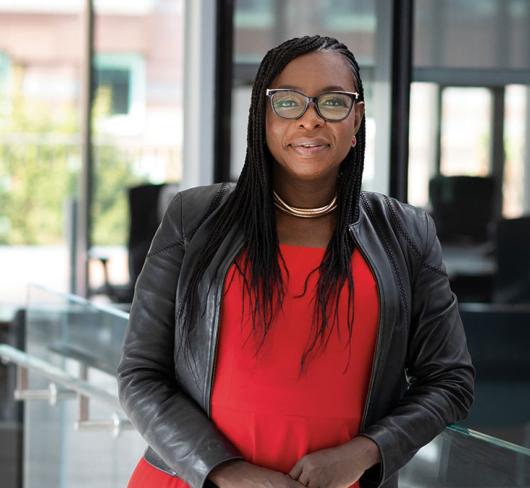Confronting Racism in the Classroom
“Educators must begin to understand their students through the lens of race as a salient point in theirmyriad identities.”
GEORGE J. SEFA DEI1
In many schools across Ontario, teachers celebrate diversity by using multicultural themes in their classrooms and by holding multicultural days and evenings that include a celebration of the collective differences. While this is important as a starting point for equity work, there is a need to go further and deal head on with systemic and institutional bias, and the Eurocentric concepts in the curriculum, in our schools, and in society at large. Doing so requires an antiracist approach.
The limits of multicultural education
Multicultural education is about recognizing and celebrating differences (i.e., heritage luncheons). Unfortunately, multicultural education has been diluted into something that applies mainly to dress, dances, and dinners. This type of emphasis casts a focus that emphasizes differences and promotes the acceptance of “tolerance”: the idea that “they” and “those people” do things differently from “us Canadians.” It does not promote inclusion or antiracism. Effective multicultural education should emphasize similarity as well as differences.
When educators begin to use multicultural education as a tool to incorporate and promote discussions around the way people live, learn, and believe, the discourse becomes valuable and satisfying for those involved. By focusing on our commonalities, such as our basic human qualities, we are able to move towards dealing with the tougher issues of race and racial discrimination.
Broadening the educational approach
Multicultural education promotes the understanding that, despite our differences as human beings, we share common traits and beliefs. Anti- racist education acknowledges these similarities but states that the difference in the manner in which we are treated, as a result of race and ethnicity, is pervasive in society and often unjust.
A person’s race and ethnicity must be acknowledged when discussing and teaching anti-racist education. It is important to have discussions around what it is like to be Black, Asian, Indian, or Native Canadian with staff, students and communities. Students’ perceptions around how people are treated are generally honest and in many cases more accurate than those of adults. Acknowledging that people are treated differently because of their race and ethnicity allows students, teachers, and communities to engage in a dialogue on why this occurs. It is important to acknowledge this different treatment and then discuss what is involved in responding to it.2
George Dei states, “Anti racist education is proactive educational practice intended to address all forms of racism and the intersections of social difference (race, class, gender, sexuality, and disability).”3
Simply put, the focus of antiracist education is to deal directly with the narrow Eurocentric approach in the curriculum, teaching practices, and assessment of students from diverse cultural, religious, and ethnic backgrounds.
Antiracist education and educators focus on the importance of challenging racism at all levels – personal, cultural, and institutional. Through the creation of an environment that fosters a dialogue around issues of race and racism, students begin to acquire the tools they need to recognize and understand the various forms of racism and oppression. This enables them to deal with these issues in a positive manner when they confront them.
The everyday classroom
Here are some suggestions for incorporating an antiracist approach in your classroom:
- Avoid “one-shot” days that promote a cultural group or holiday. Incorporate, for example, Black/African history into everyday teaching; discuss the achievements of Black/African inventors, scientists and leaders in all aspects of the curriculum.
- Promote the achievements of all people in society. For example, when teaching history/social studies discuss the contributions of Chinese Canadians to the railway system; or discuss the idea that the view of Louis Riel as leader /hero or a traitor/rebel depends on what lens one is using.
- Provide students with the historical background that shows why certain groups are/were treated differently; for example, why the Chinese paid a head tax, and why others were denied access to Canada. Encourage skills that require students to think critically about bias and inequity.
- Provide examples of the changes we, as a nation, have made to incorporate and respect our ancestries from around the world. Examples are the acknowledged apology to Japanese Canadians and to our First Nations people for the abuses suffered in residential schools.
- Encourage critical thinking/analysis when choosing literature, films and newsprint. Ask students to look at the depiction of race and ethnicity in magazines. Discuss the use of language when the media relays a story or event. Examples are the use of the terms “tribal warare” and “ethnic cleansing” to describe crises in Africa and Europe.
I have often been asked if a teacher can combine multicultural and antiracist education into everyday teaching and the answer is yes. Combining them allows students, parents, and communities to come together and celebrate cultural traditions and still uncover the reality that discrimination and racism exist for racial minorities in society. By creating a classroom where open and honest dialogue can occur we provide a voice for our students, who often believe they do not have one.
Resources:
We’re Erasing Prejudice for Good – ETFO curriculum package, available from shopETFO.
Respecting Cultures and Honouring Differences – available from shopETFO. metisnation.org/news/riel_day/2005/home.html un.org/cyberschoolbus/iderd/
Notes
1. Dei, George J. Sefa, “Challenges for Anti-Racist Educators in Ontario Today,
Orbit Magazine 33(3), 2003.
2. Dei, p. 2.
3. Dei, p. 2.

